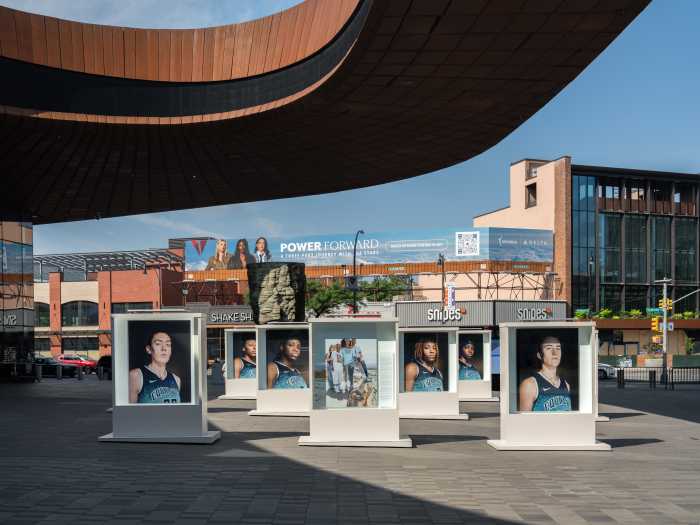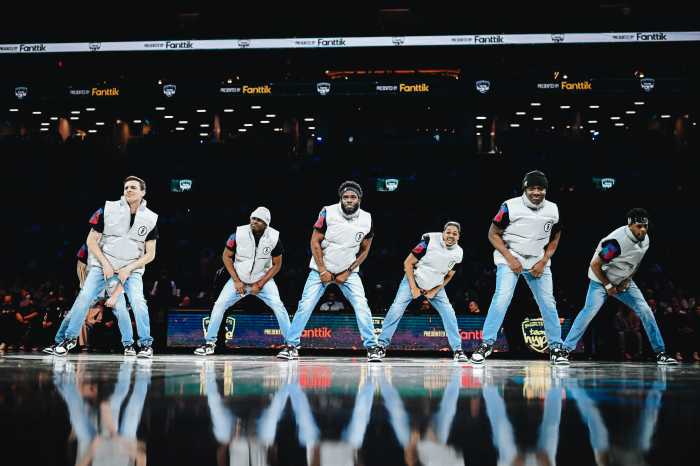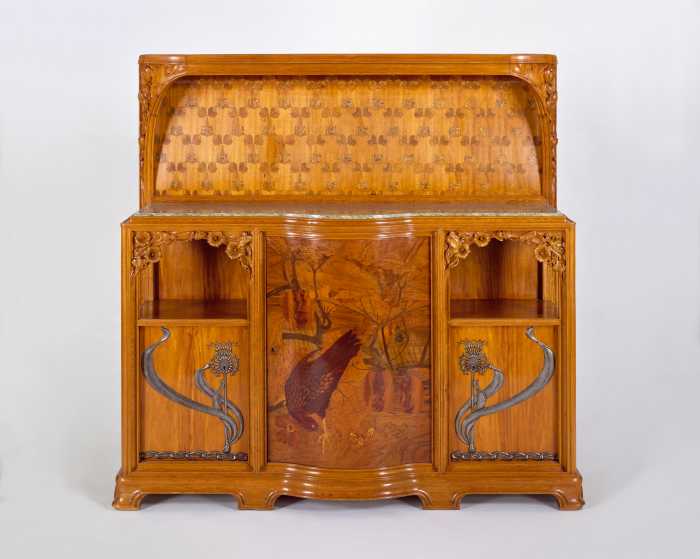The Bombers wore dark-blue pinstriped baseball uniforms, and they were gathered behind the third-base dugout in Brooklyn. Some of them were big, athletic guys.
Were these players the Bronx Bombers of old, in Brooklyn to challenge the Dodgers? No, these athletes were the Long Island Bombers of today, a team of blind and visually impaired players, at Keyspan Park on July 25, ostensibly to challenge a team from the office of state Sen. Marty Golden.
But they were really there to challenge themselves.
“I play baseball because I love the challenge of it,” said Braulio Thorne, a 6-foot-3, 240-pound left-hander who seems to have the muscle to power a baseball over the seldom-reached right field fence at Keyspan.
Braulio is the captain of the Bombers, a team that plays “beep baseball,” a version of the national pastime for those with poor or no eyesight.
“We all love baseball. We just happen to be blind and visually impaired,” explains Ted Fass, executive director of the Bombers, based in Rockville Centre, Long Island, but comprised of men and women from throughout the metropolitan area.
“Beep baseball” uses a melon-sized ball that resembles a large softball. The ball has a beeper in it that alerts players to its approach.
Two bases are used, one at third and one at first. The bases are 48 to 54 inches high and covered with vinyl or canvas; they’re 100 feet from home plate, each with a sound device that emits a beep so that players can head to its location.
A run is scored when a player hits the ball and reaches either base before a fielder controls the batted ball.
The pitchers in “beep baseball” are sighted players and the pitcher’s goal is to provide a good pitch for his teammate. The pitcher may not field the ball, since he is really a member of the offense.
Sighted volunteers are in the field to call out the location of the batted ball to the players.
Sighted players wear blindfolds when they bat, but they don’t use the blindfolds in the field — it’s too dangerous for them.
The field for the game was set up on the right and center field grass at Keyspan, with home plate on the grass in back of the ballpark’s regular first base.
The public address announcer told the crowd a little about the Bombers and the rules of the game and explained that the crowd should be silent when players are hitting, fielding and running.
“The crowd should react like it’s tennis,” explained Bomber Steve Guerra. “Players need to hear the beeps from the ball and bases. Otherwise, it can get pretty dangerous. So we ask the crowd not to clap until a play is over.”
The Bombers game was scheduled before the Cyclones’ regular game against Aberdeen. The gates had been opened, but as the Bombers were warming up, the Keyspan crowd was still sparse.
The game begins with Golden, the first batter for the “A” team. He misses the first pitch by several feet. On the second pitch, he takes a good swing and comes close to hitting the ball — no mean feat when you’re wearing a blindfold. Allowed to hit without the blindfold since he has two strikes, Golden grounds out.
Here are some of the game’s individual moments that should be recalled.
A Brooklynite, Romeo Edmead, a 6-foot-2 right handed Bomber, stepped up to the plate in the third inning and sent a rocket down the third-base line, just foul. Although Edmead eventually made out, his blast was the hardest hit ball of the game, for either team. A graduate of Brooklyn College, Romeo works as a sports information analyst with CBS Sports.
“I play because I love it, love the challenge of it,” said Edmead as he received congratulations from his teammates for his blast.
The crowd at Keyspan had grown, and they were cooperating with the players by being silent until each play was over, and only then cheering for good efforts.
Braulio Thorne had an at-bat that drew sustained applause from the crowd. He hit a line drive shot off the legs of the pitcher, who stands only 20 feet away from home plate and wears a mask — for good reason. Braulio was declared out because a batted ball must go past the pitcher, but the line drive proved the value of the sighted pitcher using a catcher’s mask.
Late in the game, Donovan Mitchell, the Cyclones’ batting coach, in full uniform, pinch-hit for the “A” team. Mitchell was wearing a blindfold and he missed the first pitch by swinging early against the beeping ball. In his second swing, he came closer to hitting the ball. He was now permitted to peek out of his blindfold and he grounded out.
“It was the hardest athletic thing that I ever had to do,” admitted the chagrined Mitchell. “Trying to hit a ball that you can’t see is really tough.”
How hard was it for him to run to first base without sight?
“Not that hard,” said Donovan. “I cheated a little and peeked out of the blindfold — plus the sighted volunteer kept calling to me to let me know where the bag was.”
Mitchell was a good sport to take part in the game. The crowd cheered his efforts.
What did Donovan learn from the experience?
“Seeing [the Bombers] play reminds us to take nothing for granted and to give our best efforts every day in whatever we do, just like they do,” said Mitchell.
Speaking about best efforts, mention must be made of a play by Bombers outfielder Nick Esposito. A teacher by trade, Esposito has muscles like those of Cyclones first baseman Jim Burt. And Esposito isn’t just strong — he’s also fast. On one ball hit to the outfield, Esposito made a sliding grab worthy of any player, sighted or not, and the outfielder drew a loud cheer for the spectacular play.
Watching the Bombers run to first base also brought out another point. We have all seen numerous examples of major league players “styling” as they linger near the batter’s box on an apparent home run. Sometimes the ball doesn’t leave the park and the batter settles for a double rather than a triple because of his late start out of the box. We have all seen major leaguers hit a grounder to shortstop and then dog it when running to first. Every so often, that type of effort costs a team a game.
Those lucky fans who caught the play of the Bombers were witnesses to no such efforts. The Bombers raced out of the batter’s box, sprinting pell-mell down the first base line, heading towards a four-foot-high base that they could not see. They dove full out, hurtling through the air like a football player diving for a tackle, as they lunged for the base.
The Cyclones were on the field watching the preliminary game. They’re usually a hustling bunch, but maybe this game was an inspiration. The Brooklyn boys scored three runs in each of the first two innings in their victory against Aberdeen.
The next time I see a major league game, I want to see each player run to first base with the all-out effort of a Long Island Bomber.
























